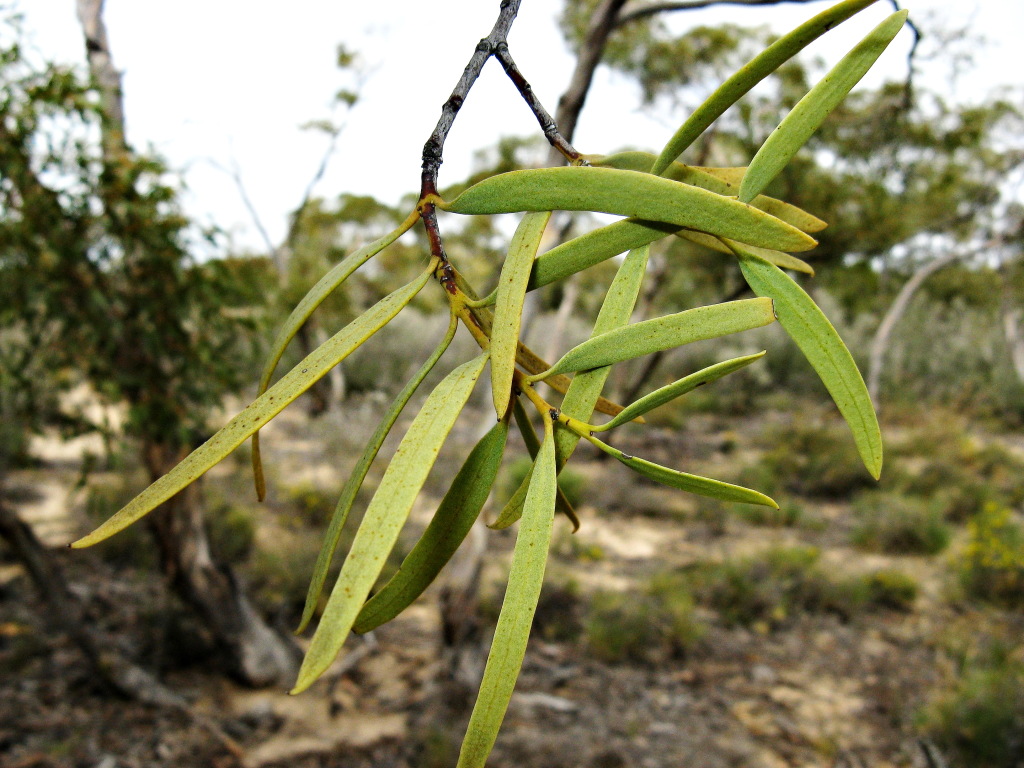Santalum acuminatum
(R.Br.) A.DC. Sweet QuandongErect shrub or small tree to c. 6 m high, often root-suckering; branchlets spreading to pendulous, angular-striate, glabrous. Leaves opposite, lanceolate, often falcate, 3–9 cm long, 3–15 mm wide, apex acute, often with a curved point when young, margins flat, surfaces concolorous, yellowish-green; petiole 3–8 mm long. Inflorescences terminal pyramidal panicles; peduncle 5–10 mm long; pedicels 1–2 mm long. Receptacle c. 1 mm long; tepals 4, triangular-ovate, 1–2 mm long, obtuse, green or orange, persistent; basal hair tuft short; disc shortly lobed; style c. 0.5 mm long, stigma 2-lobed. Drupe globose, with perianth persistent, 15–25 mm diam., bright shining red, rarely yellow, sweet, edible; endocarp deeply pitted; kernel edible. Flowers mainly Oct.–May.
LoM, MuM, Wim, VVP, VRiv, RobP, MuF, Gold, CVU, GGr, NIS. Also WA, NT, SA, Qld, NSW. Widespread in woodland communities of north-western and northern Victoria but generally uncommon.
Jeanes, J.A. (1999). Santalum. In: Walsh, N.G.; Entwisle, T.J., Flora of Victoria Vol. 4, Cornaceae to Asteraceae, pp. 35–37. Inkata Press, Melbourne.
 Spinning
Spinning



